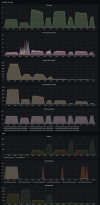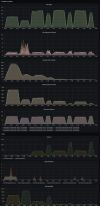One thing you could attempt, would be to use relaxed ordering. That needs to be set in the BIOS and on the Mellonx cards. Yet, on our system that didn't yield any benefit. But I assume that for one the CPU doesn't have enough cores per complex and that our 100 GbE cards are ConnectX-4.So I believe there is nothing left to change on the configuration that would further improve the performance.
https://hpcadvisorycouncil.atlassia...ing+Guide+for+InfiniBand+HPC#Relaxed-Ordering



